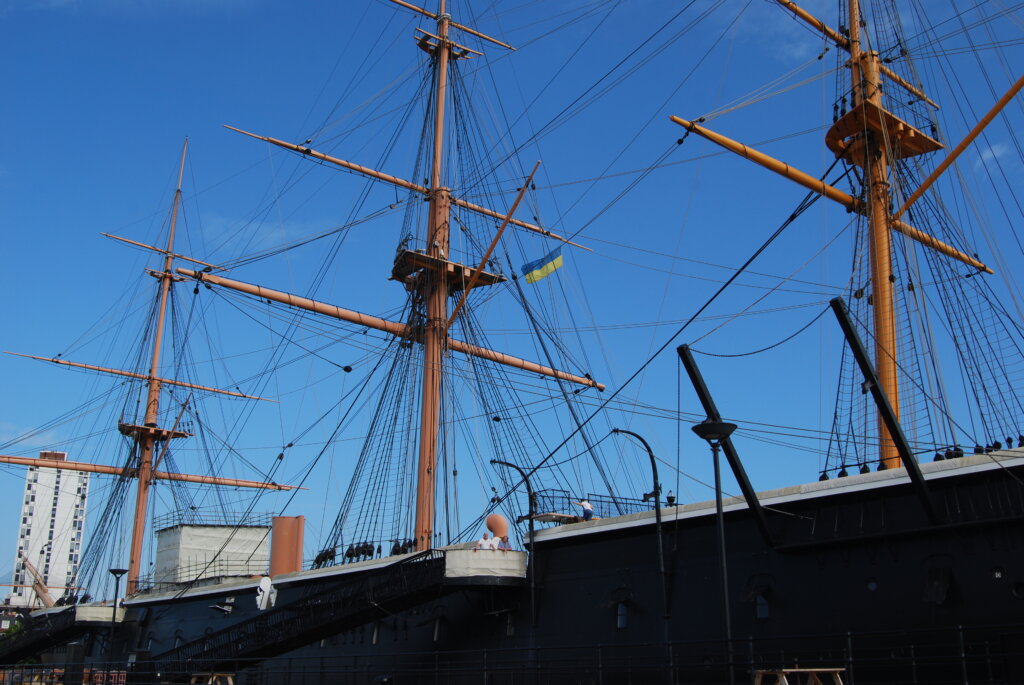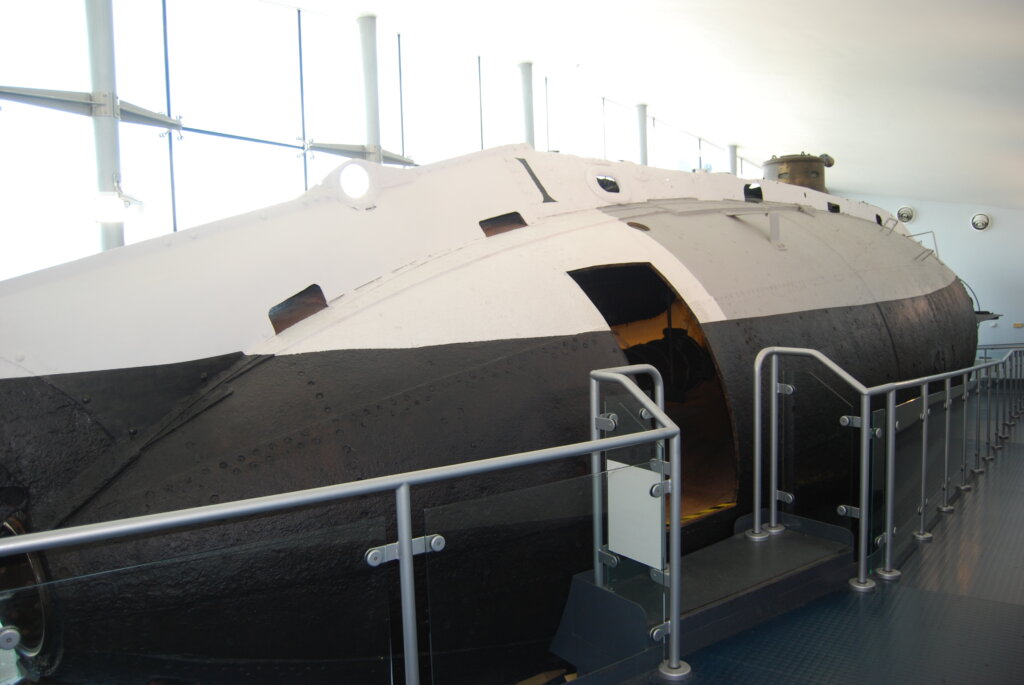Antoine Vanner writes naval adventures set in the late 19th century as sail was giving way to steam. I was thinking of him last week as I visited (again) HMS Warrior, the first British iron-clad steel hulled ship which carried a full set of sail and a powerful engine.

Given his interest, it’s not surprising that the fifth book in his ‘Dawlish Chronicles’ series (named for the hero, Nicholas Dawlish) features an early submarine. Britannia’s Shark, set in 1881, is a largely fictional account of the adventures of ‘the Fenian Ram’, a submarine designed by the Irishman, John Holland. In Vanner’s story the ram ends up destroyed but the real Fenian Ram still exists and is on display at the Paterson Museum in New Jersey.
Vanner’s interest in naval technology means that there is a lot of technical detail in the book, fascinating enough to encourage me to visit the Submarine Museum in Gosport to have a look at the Royal Navy’s oldest submarine, the Holland I (named for the same John Holland).

There are a couple of tiny details I’m not absolutely sure of but you certainly get a good basic understanding of how the thing worked and of how terrifying it must have been to sail in. Technical details alone, though, will not fill a novel and Vanner throws in a story that resembles a James Bond film in skipping from location to location with increasingly dramatic (and increasingly bloody) set pieces in each. Whether he is being hi-jacked by pirates off the coast of Greece, fighting Irish nationalists in New York or battling alongside rebel forces in Cuba, Dawlish combines the pluck of a traditional 19th century hero with a willingness to get down and dirty that would not disgrace Bond himself. The result is a book that is high on adventure and excitement if occasionally pushing the limits of credibility. Despite this, Vanner incorporates a lot of real history into his story. As is so often the case, the historically accurate details are often the most incredible. For example Holland – yes, the man the Royal Navy named its first submarine after – was a passionate believer in an Irish Free State and no friend of the British.
The account of the slave revolts in Cuba (the Spanish kept slaves there until 1886) is astonishing to a modern reader and a useful reminder that Britain rejected slavery relatively early.
In summary, this is a great story of historical adventure with a lot of technical and political detail wrapped inside the candy coating of daring deeds and thrilling escapades.

